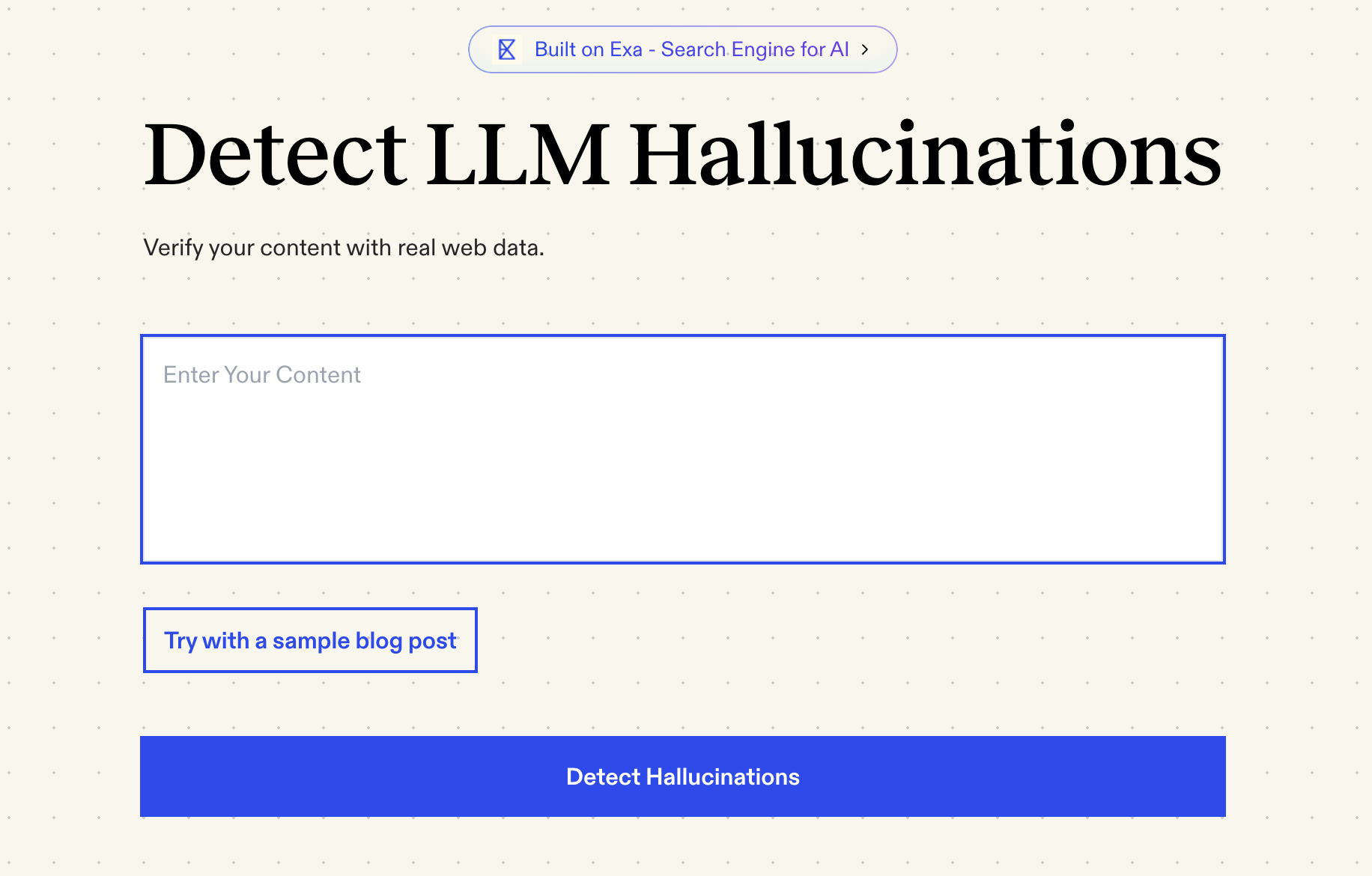We built a live hallucination detector that uses Exa to verify LLM-generated content. When you input text, the app breaks it into individual claims, searches for evidence to verify each one, and returns relevant sources with a verification confidence score. A claim is a single, verifiable statement that can be proven true or false - like “The Eiffel Tower is in Paris” or “It was built in 1822.”

Click here to try it out.
- The LLM extracts verifiable claims from your text
- Exa searches for relevant sources for each claim
- The LLM evaluates each claim against its sources, returning whether or not its true, along with a confidence score.
See the full step-by-step guide and github repo if you’d like to recreate.
Function breakdown
1
Extracting claims
The
extract_claims function uses an LLM (Anthropic’s, in this case) to identify distinct, verifiable statements from your inputted text, returning these claims as a JSON array of strings.Python
2
Searching for evidence
The
exa_search function uses Exa search to find evidence for each extracted claim. For every claim, it retrieves the 5 most relevant sources, formats them with their URLs and content (text), passing them to the next function for verification.Python
3
Verifying claims
The
verify_claim function checks each claim against the sources from exa_search. It uses an LLM to determine if the sources support or refute the claim and returns a decision with a confidence score. If no sources are found, it returns “insufficient information”.Python

